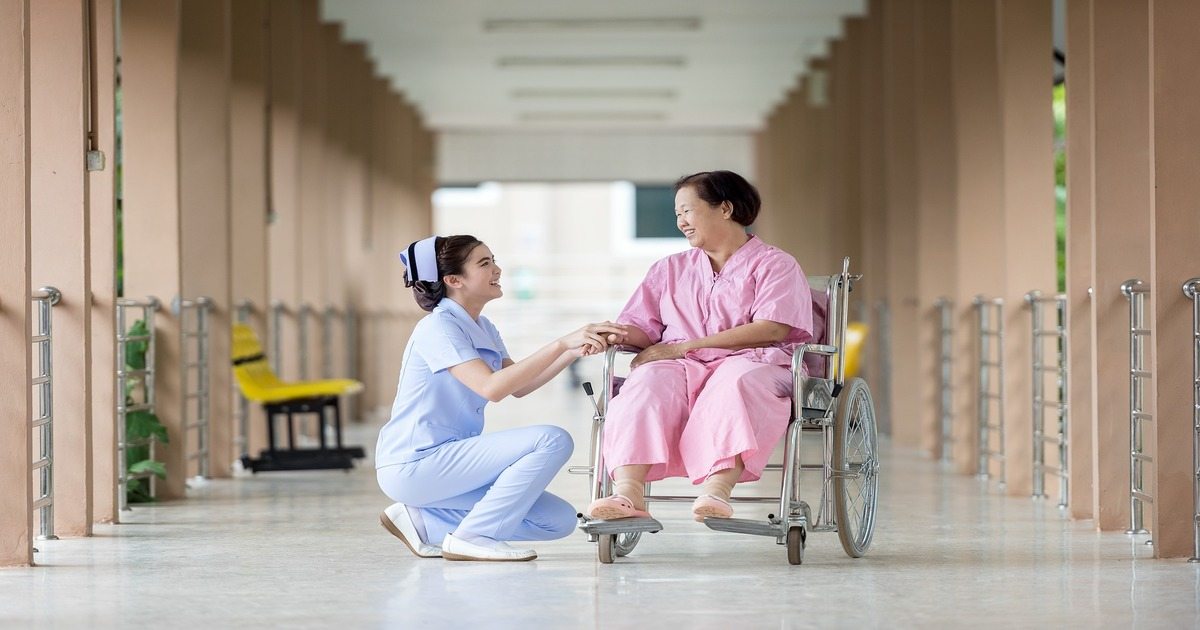Mesothelioma Help Cancer News

BAP1 Gene Research Opens Door to Mesothelioma Clinical Trial
For years, Michele Carbone, MD, PhD, and a team of researchers from the University of Hawaii Cancer Center have focused their mesothelioma research on the BAP1 gene. The researchers suspected that mutations of the BAP1 gene, which is involved in tumor suppression, might underlie mesothelioma in people with a strong family history of the disease. Now, in a recent study, the team has uncovered the mechanism behind the gene and what makes people with it more susceptible to developing cancers from environmental carcinogens, such as asbestos.
The researchers found that the BRCA1-associated protein 1, or BAP1, regulates a channel (IP3R3) inside cells that moves calcium. When the BAP1 gene is damaged, calcium levels decrease leaving the cells more apt to become malignant after environmental carcinogen exposure, according to June 14 press release from the University of Hawaii Cancer Center.
The study also led to the discovery in mouse models that this same effect left the cancer cells resistant to chemotherapy. Mesothelioma cells have an uncanny ability to fight off even the most toxic anti-cancer agents, allowing the cancer cells to spread and thrive.
Mesothelioma, a cancer caused by past asbestos exposure, is diagnosed in nearly 3,000 Americans each year. These people are faced with a long road of ups and downs after a seemingly successful cycle of chemotherapy ultimately fails and the cancer returns. Due to the aggressiveness of the cancer and its resistance to treatments, mesothelioma oncologists then turn to another chemotherapy to again attempt to quash the cancer.
Once the UH researchers found the “why” behind BAP1 the team turned to finding the “how” to fix the channel that can effectively lead to apoptosis, or death of the cancer cells, when treated with chemotherapy or other anti-cancer therapies. Once BAP1 levels are restored and the calcium channels are stabilized, treating cancer patients with the BAP1 mutation, and potentially preventing cancer in the first place, is feasible, according to the report. A clinical trial is in the works to test the findings.
“We want to prevent and treat cancer in as many people as possible,” said Dr. Carbone. “We hope to start a clinical trial, within five years or less, to test the susceptibility to chemotherapy in patients with BAP1 mutated tumors.”
Carbone notes that close to 20 percent of all cancers have BAP1 mutations, including 70 percent of mesothelioma cases and 90 percent of eye melanomas.
According to the National Institutes of Health, clinical trials are at the heart of all medical advances. Clinical trials serve to uncover better ways to treat, prevent, diagnose and understand human diseases. They provide mesothelioma researchers with critical information needed to allow them to move their findings from the lab to patients. They also offer patients access to a treatment that might not otherwise be available.
“I very much hope that our discovery will help save many lives,” said Angela Bononi, co-author of the study and post-doctoral fellow in Carbone’s lab.
Find the full study in the June 22, 2017 issue of Nature.
Know more about Mesothelioma and how you can deal with it.

How Paralegals Help with Your Mesothelioma Case
Paralegals can be found in every area of the law. One of the largest areas to utilize paralegals, though, is the personal injury field. Personal injury law is the field of law devoted to helping those who have been injured unjustly to seek compensation. For those who have been diagnosed with mesothelioma after being exposed to asbestos, compensation can be sought from the companies that failed to warn them of the danger.
Paralegals who work in the complex asbestos litigation field assist the attorneys who fight for the rights of victims who have been diagnosed with mesothelioma, asbestos lung cancer, asbestosis, and other asbestos diseases. These paralegals do a lot of behind-the-scenes work to help build the claim for maximum compensation, whether through litigation or asbestos bankruptcy funds.
Although many asbestos cases end in settlements, there are also many that go to trial, requiring a strong and experienced team of attorneys, paralegals, and other professionals. Paralegals assist attorneys in all aspects of asbestos litigation, from initial client interviews to appeals.
Common tasks performed by a paralegal for a mesothelioma case include:
- Interviewing clients, doctors, medical specialists, and former co-workers or fellow veterans
- Gathering medical records and other supporting evidence, such as documentation to pinpoint where and when the patient was exposed to asbestos
- Aiding the attorney in determining what types of damages a plaintiff may be entitled to recover
- Communicating with the client and insurance companies
- Filing legal documents with the court
- Locating expert witnesses to interview
- Maintaining a calendar of pretrial and trial order deadlines
- Preparing pretrial and trial motions
Asbestos litigation paralegals are specifically trained to work in this area of the law. Because of the complexities of mesothelioma cases, these legal professionals must possess a special set of skills and knowledge to assist attorneys and, ultimately, clients.
Ways paralegals help mesothelioma patients and their families pursue maximum compensation:
Client Services
Because asbestos attorneys are very busy and cannot perform every function necessary to successfully take on a case, paralegals provide extensive support involving client services. Paralegals help interview and screen potential clients, keep current with case status, and interact with clients and their families in a meaningful way to ensure their needs are being met.
Drafting
Asbestos paralegals must be skilled in drafting and submitting legal documents related to mesothelioma claims. Although the attorney ultimately reviews these documents, the paralegal spends the time drafting them and ensuring they are submitted on time.
Analysis
Paralegals must have specific training or experience in order to handle the medical aspects of a mesothelioma case. The paralegals will ascertain which medical records and bills are needed from the patient and determine what future cost projections or experts are needed. Many paralegals in this field are familiar with how asbestos diseases affect patients. This knowledge allows paralegals to prepare medical chronologies, medical expense itemizations, deposition summaries, and demand packages.
Trial Preparation
Asbestos litigation paralegals play an important role in trial preparation. They perform a variety of tasks to assist attorneys, including jury selection preparation, opening and closing statements, and witness outlines. Paralegals also determine which exhibits will be utilized and ensure that they are properly prepared for trial.
Trial
One of the paralegal’s main jobs is assisting the attorney(s) with the entire voir dire process, including taking notes and helping the attorney strike or select jurors. Once the trial is under way, paralegals pull and pass exhibits to the attorney, act as a liaison to the client, communicate with the bailiff or court reporter if issues arise, bring witnesses into the courtroom when it is their turn to testify, and act as a second set of eyes and ears in the courtroom.
Although this is not an exhaustive list of everything an asbestos litigation paralegal does to assist attorneys in mesothelioma cases, it certainly shows that paralegals play a pivotal role in helping clients pursue maximum compensation for their injuries. If you would like to learn more about the paralegal profession, visit Fremont College. The school’s website offers a number of resources for those looking for a career as a paralegal.
An ABA accelerated paralegal certificate program that allows you to finish your schooling in just 15 months. Robust education that speaks to essential skills needed for those looking to be successful in the legal field. Lean more about the Paralegal Studies program by visiting http://fremont.edu/ For more information, please visit us at www.fremont.edu or call us at 1-800-373-6668 / 1-800-FRE-MONT

Solution to “Tumor Growth Paradox” May Lead to New Approach in Treating Mesothelioma
New research has shown that while for years scientists have been trying to find a treatment for cancer that forces cancer cell death, they may have been unknowingly encouraging the cancer cells to spread instead. In a new study, researchers found that by targeting resolvins this “tumor growth paradox” may be resolved. This finding may lead to a new approach in treating cancer, including Mesothelioma.
Researchers from the Institute of Systems Biology (ISB) in Seattle, Washington, report that when cancer cells are killed off “cellular debris” is left behind that can lead to an inflammatory response from the immune system, according to a Dec. 1 article in Medical News Today. The inflammation can actually put the immune system into overdrive where it is roped into stimulating more cancer cell growth.
Lead researcher Dr. Sui Huang believes researchers need to look beyond simply finding the best, fastest way to kill cancer cells, according to a press release from ISB announcing the findings. Using an analogy of comparing attacking cancer cells with military generals fighting the enemy, Dr. Huang said, “What politicians and military leaders have long learned, cancer research is now realizing: Look beyond just making killing more efficient. This new vista may open ample new opportunities for gentler, less toxic non-killing – but effective – anti-cancer drugs.”
The research focused on using resolvins, or natural compounds that stop inflammation, to clear out the debris left behind by the cells. Building on previous research that showed resolvin prompted immune cells “to eat up the dead cell debris” the team speculated resolvin would be effective when used to fight cancer. Using mouse models they found that when mice carrying “debris-induced tumors” were treated with resolvin it “drastically blocked growth of mouse tumors that chemotherapy failed to inhibit.” They concluded that combining chemotherapy with resolvin “showed maximal effect in animal tumors treated with standard drugs.”
Successfully halting cancer growth is critical for increasing survival in all cancer patients, and especially in mesothelioma patients who have a grim prognosis. Mesothelioma is a rare, aggressive form of cancer caused by past asbestos exposure that is notorious for fighting off even the most seasoned cancer treatments, including chemotherapy, radiation.
“These results demonstrate that enhancing endogenous clearance of tumor cell debris is a new therapeutic target that may complement cytotoxic cancer therapies,” the researchers concluded.
Each year, nearly 3,000 Americans are diagnosed with mesothelioma. There is no known cure for the disease.
Read the study in the Nov. 30 issue of the Journal of Experimental Medicine.
Sources:
- Journal of Experimental Medicine
http://jem.rupress.org/content/early/2017/11/29/jem.20170681 - (Researchers from the Institute of Systems Biology) ISB
https://www.systemsbiology.org/news/2017/11/30/cancer-debris - Medical News Today
http://www.medicalnewstoday.com/releases/313580.php

Mesothelioma Patients and Their Caregivers Benefit From Yoga
According to the National Cancer Society, exercise is an important part of cancer treatment and recovery. Exercise can help patients feel better physically, improve their appetite, loosen stiffened joints, as well as improve their mood. While many mesothelioma patients do not have the stamina or strength to walk, yoga can offer these same benefits – and maybe more. A recent study reports that yoga “provides physical and mental benefits for both lung cancer patients and their caregivers.”
Researchers from the University of Texas MD Anderson Cancer Center set out to find interventions for families facing a poor cancer prognosis and to examine mind-body techniques as supportive care strategies. Led by Kathrin Milbury, PhD, an assistant professor of cancer medicine in the Department of Palliative Care and Rehabilitation Medicine, they turned to yoga as a “a gentle form of exercise,” and for the ease in modifying poses for patients and for adapting it for partner participation.
In the feasibility study focused on physical postures, breathing exercises, and meditation, the team offered patients and their caregivers 15, one-hour yoga sessions, according to a press release announcing the initial results of the study. The poses included chest-opening moves that incorporated stretching the chest area with deep breathing practice. All of the patients in the study had inoperable non-small cell lung cancer and were undergoing thoracic radiation therapy and chemotherapy. The patients completed a quality-of-life survey and a six-minute walking assessment. 26 patient/caregiver pairs took part, completing a mean of 12 classes.
“It is never too late to engage in exercise, and we know from earlier studies that people can exercise while being treated with chemotherapy or radiation,” said Dr. Milbury. “Caregivers sometimes have more anxiety and sleeping problems than patients. Therefore, we thought that having the patient and caregiver go through yoga instruction together would be beneficial for both partners.”
The patients who took the yoga classes “had significantly better physical function as assessed by the 6-minute walking test,” better stamina for performing daily activities, as well as improved mental health. The caregivers reported improvements in fatigue and stamina.
Mesothelioma is an incurable cancer of the lining of the lungs, abdomen or heart caused by past exposure to asbestos. Research has shown that patients who focus on the power of the mind-body connection and choose to be optimistic and positive will realize a higher quality of life and may respond better to treatments. In addition, cancer patients who practice yoga and stay active by walking or getting outside are shown to have less stress and anxiety than those who remain sedentary.
According to WebMD, regular yoga practice can “lead to significant improvements in sleep for people who have undergone cancer treatment.” In a study conducted by the James P. Wilmot Cancer Center, University of Rochester Medical Center, researchers found that yoga was effective in improving sleep quality and sleep efficiency in cancer patients.
“We demonstrated that patients undergoing treatment for lung cancer are not too sick to participate in a behavioral supportive care intervention,” said Dr. Milbury. “Both patients and caregivers reported to have enjoyed the experience, and it gave them a time away from cancer, and [they] learned something new together.”
The research will be continued with a more diverse group of patients.
Prior to beginning any fitness routine, mesothelioma patients should discuss their options with their doctors.
Visit MD Anderson Cancer Center’s website to find out more about the yoga study. The results were presented at the 2017 Palliative And Supportive Care In Oncology Symposium held Oct. 27-28 in San Diego, CA.

Mesothelioma Nurse Asks Everyone to Reach Out to Someone This Holiday Season
As we close out November and National Family Caregivers Month, we give thanks to all mesothelioma patients and to those who support them. From the diagnosis through treatment, to living with a chronic condition, a serious illness is stressful and life-altering. For the patient and the family member, or support person, their relationships are forever altered. Over the years I have met outstanding caregivers and supportive friends who have seen patients through dark times and who have helped immensely in the whole mesothelioma journey.
This past week, I saw once again, the importance of relationships, support, and human interactions. Unfortunately, I saw it from the other side, from a patient who is alone and isolated. I took care of him this past week, while he was having an outpatient procedure, and I was reminded of how easy it can be in today’s world to become isolated.
The man had been a successful professor who has been retired for over 15 years. He did not have a computer- not interested. He had no one to drive him to or from his appointments and he hired a car service for his transportation. He did not list an emergency contact, he had no one. He had no family or friends, and he did not know any of his neighbors.
Although my time with him was brief, the impression he made on me was profound. He was reluctant to let his team know about his situation. His family was gone, he had a distant cousin down south but he had not kept in touch with him. He was so appreciative of any kindness shown him. He was a proud, independent man, who at this point in his life, had no family or supportive relationships.
Social and emotional isolation is a growing problem in this age of technology and instant communications. It is proven that individuals with less social connections have disrupted sleep patterns, altered immune systems, more inflammation and higher levels of stress hormones. Socially isolated, middle-aged and older people have a 30 percent higher risk of dying in the next seven years.
As we enjoy the holiday season – make it a point to look around your neighborhood, apartment building, and office and reach out to someone who might just need a kind word or a conversation to help them get through the day. The relationship you form can save someone’s life and enrich your own.
Free Mesothelioma Patient & Treatment Guide
We’d like to offer you our in-depth guide, “A Patient’s Guide to Mesothelioma,” absolutely free of charge.
It contains a wealth of information and resources to help you better understand the condition, choose (and afford) appropriate treatment, and exercise your legal right to compensation.
Download Now